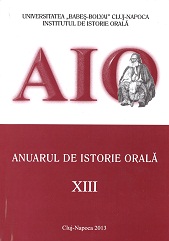ISTORIE ŞI MEMORIE: COLECTIVIZAREA AGRICULTURII ÎN JUDEŢUL GORJ
History and Memory: The Collectivization of Agriculture in Gorj County
Author(s): Hadrian Gorun, Gheorghe GorunSubject(s): History
Published by: Argonaut
Keywords: collectivization, agriculture, peasants, repression, Gorj county
Summary/Abstract: The collectivization of the agriculture represented one of the greatest “calamities” in the history of Romanian village. The socialist transformation of the agriculture was inspired by the Soviet pattern. The Romanian Communist Party aimed to destroy the economic and political independence of the peasants. Land was the most important thing for the peasants and without it the peasants were to become agricultural proletarians. In the world of the Romanian village the values were reversed. This study is based upon the accounts of the eye-witnesses and also upon the documents from the archives and historiographic sources. Many villages from Gorj have been the victims of the collectivization, despite the limited agricultural potential of this county. Thus, the collectivization in Gorj did not have any economic reason if we take into account the relief of the region. The main target of the Communist repression represented the so-called kulaks, the wealthy peasants. However, we should mention that most of the peasants opposed a strong and stubborn resistance against the agricultural policy of the Communist Party. There was a passive and generalized resistance against collectivization. The regime used different methods to persuade peasants to join collective farms: psychological pressures, threats, molestations. A lot of peasants who opposed collectivization were tortured and imprisoned or sent to the labor camps.
Journal: Anuarul Institutului de Istorie Orală
- Issue Year: 2013
- Issue No: XIII
- Page Range: 13-42
- Page Count: 30
- Language: Romanian

